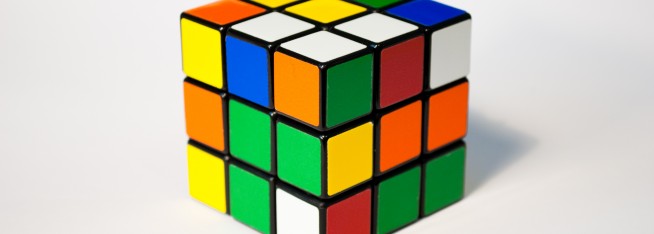The internet effect
It sounds like a movie directed by Christopher Nolan, but in essence it means that every action or interaction we will undertake will receive a data tag and be trackable. Taking a pear out of the fridge? Your smart fridge will register this and will know when to order more pears. Looking at a billboard? Eye tracking might tell marketers what part of the billboard you are looking at. This data can be interpreted to understand what it is that you are exactly interested in and then via NFC send the relevant information to your mobile.
Are people even looking at our product? As it appears below, men didn’t even look at the shoes.

2011 @ MRC Internation. Inc. All rights Reserved. Eyetrackshop.
Data, information and knowledge are frequently used together. Data in its own carries no meaning. It only turns into information when it is interpreted and becomes knowledge when applied. Yes, Big Data has been a buzzword for a while now, but is useless unless we interpret and apply it correctly.
The challenge will be to prioritise the data. What data is relevant and qualitative? How can we mine it, interpret it and use it to create better business solutions? In advertising, our job is mainly to influence the bottom line i.e. the path to purchase.
We use messaging to convince someone, whether it is a call to action or an appealing visual. Making good use of data is hard with the overlap of channels and devices. Ultimately we need to track where the customer got introduced to and researched the product, developed purchase intent and ultimately purchased.
We need to know which
· Channel;
· Device;
· Creative; and
· Content
persuaded the person in each phase of the purchase path.
Path and conversion
Cookies and trackers are device dependent. Therefore, to gather customer info throughout their whole path of purchase, we need to identify the customer at every touch point. Only then we can know what combination of channel, device, creative and content is giving us the best ROI.
If we are unable to gather this information, the last click will always get all the credit. If we attribute 100% ROI to one medium before, there is now an opportunity to understand the implication and weight of each path combination. For each different stage of the purchase path, there will be a combination that will deliver the highest ROI.
Advertising has now the opportunity to take the consumer through a consumer journey, over different devices instead of copy-pasting meaningless creative in 10 different channels.
| Purchase cycle | Data point | Channel | Device | Creative/Content |
| Research | N/A | Pay TV | TV | Brand top of mind |
| Intent | Product view | Online Banner | Desktop | Product |
| Customer | Add to cart | Search | Tablet | CTA |
| Existing Customer | Mobile | Engagement |
This will give us a better indication of how to optimise our advertising spend. In that way we can help our clients to be more proactive and make smarter choices between Owned, Earned and Bought media. From a case study, we found that display is highly underrated. The last click interaction was Google, but an online banner accounted for 95% of the conversion. In the case study graph below, display turned out to be more efficient and less expensive than SEM.

So let’s take the time to install good analytics processes in order to help optimise marketing spend. After all, that is what our clients pay us for.
Let’s be big on data, but bigger on knowledge.
Thanks to Youngbloods NSW and Christian Bartens from Datalicious.
Sources
http://en.wikipedia.org/wiki/Eye_tracking
http://www.businessinsider.com/eye-tracking-heatmaps-2012-5?op=1













